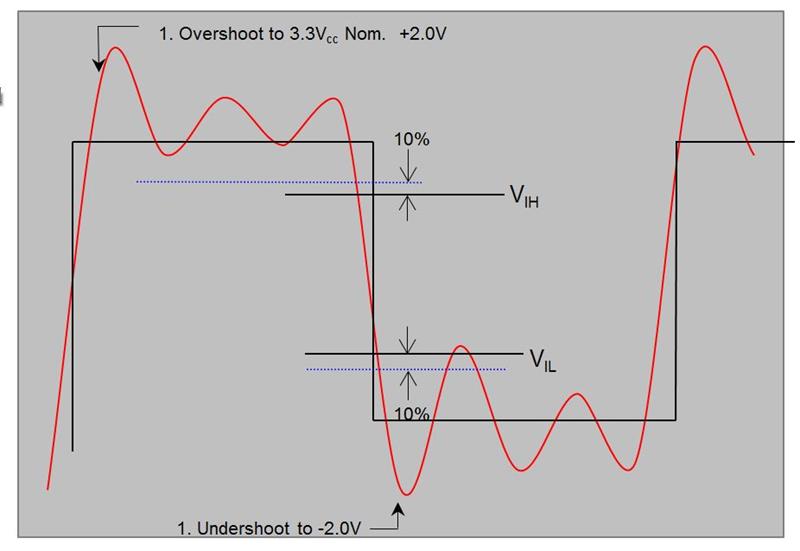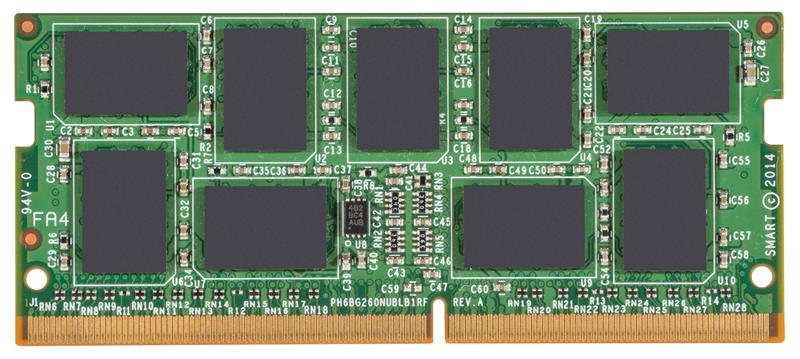This makes sense because these types of systems have some of the most stringent performance, qualification and reliability requirements in the electronics industry e.g. the severe shock and vibration testing required for aerospace and defence applications authorised by NEBS (Network Equipment-Building System).
While placing down-board DRAMs is beneficial, an increasing number of design engineers are now using DRAM modules. Although there are many benefits to using down-board DRAM, the comprehensive features of DRAM modules provide significant advantages from scalability and system density to thermal management, environmental protection, testing and cost.
Scalability
Common system designs can be leveraged to support different levels of performance for different defence applications by using low, or high, density modules with slow or fast speeds. Defence systems using DRAM modules can be designed for future upgrades without the need for a total redesign, a critical requirement of down-board DRAM systems. DDR4 module densities continue to increase and now range from 4GB to 256GB. DRAM speed grades have also made step migrations from DDR4-2133 to DDR4-3200. Many industry-standard server and storage motherboards are designed for DRAM module and CPU steppings which can be upgraded to offer the next level of performance by swapping out the old memory and old CPU with the latest versions. This methodology can be used in the Industrial Internet of Things (IIoT) and defence segments.

Above: This graph shows the signal compliance of a DRAM memory module
DRAM modules increase system density and make the most efficient use of board space. Passive or other components can be placed underneath memory modules. Modules can be stacked or nested while still allowing for sufficient air flow. Very Low Profile (VLP) or Ultra Low Profile (ULP) modules can be used for high density blade applications or on add-in cards that are plugged into main boards. They can also be aligned in the direction of the most efficient air flow across the system. If there is no air flow, heat spreaders or heat sinks can be used for heat dissipation.
Two examples of where industrial grade DDR4 SO-DIMMs have been used is within deployable and tactical communications equipment as well as for ruggedised laptops that are mounted in military vehicles. Each requires the highest possible memory density and can withstand heat exposure, limited airflow, excessive shock and vibration.
Routing and signal integrity
Using modules instead of down-board DRAMs also simplifies system design as there is less routing complication on the main board due to back-to-back DRAM placements on the module. In addition, VTT termination can be completed on the module.
All the passives including the thermal sensor are on the module which can help decrease the layer count on the main board. The required timing parameters are completed which can reduce schematic and layout errors. Modules can also help to eliminate the use of blind and buried VIAs in the DRAM section due to the aspect ratio problem with VIA size. Overall, it is easier to replicate, and reuse modules as opposed to down-board DRAMs.
Design Flexibility
The Joint Electron Device Engineering Council (JEDEC) Solid State Technology Association, an independent semiconductor engineering trade organisation, reported that the number of standard memory modules available in the market have more than doubled since the launch of DDR2. This means system designers are more likely to find an ‘exact fit’ memory module specifically designed for defence applications.
Modules are available in a variety of bus widths, form factors, densities and speeds. Module connector varieties have also increased with options ranging from 22.5° angled connectors to ultralow profile connectors with very low seating planes.
A key concern for design engineers in the defence industry is the ability to withstand mechanical shock and vibration. Aircraft and ground vehicles are equipped with highly precise recording, tracking and telecommunications equipment that need reliable high-density memory. Small form factor memory modules provide an optional solution for these densely configured systems. DDR4 Mini-DIMM connectors have been specifically designed with a level of ruggedisation to endure rough handling, tough physical environments and transportation. They have features such as positive module pre-alignment vibration damping end support and dual centre solder nail support inserted from top of housing. Mini-DIMMs were developed with extra power and ground pins compared to SO-DIMMs for more robust and reliable operation as well as long-term reliability. Underfill can be applied under the DRAMs on a module after it has been built to help safeguard the module and mitigate vibration issues. An underfill material, such as Loctite 3593, is injected under all Ball Grid Array (BGA) devices on the module (DRAMS and register etc.).

Above: An example of a DDR4 SO-DIMM
Environmental hazards
Sensitive electronic equipment can be regularly exposed to a variety of environmental hazards ranging from moisture and sea salt to sulphur dioxide. Modules exposed to these conditions can be conformally coated. The coating application process (plasma etching) protects the modules from shortages or leakages of critical components caused by moisture, fungus, dust, salt-spray and other contaminants. This step involves applying a spray coating to each module. The coating material consists of a 25-75µm thick polymer film that conforms to the circuit board topology. Critical contact areas of the module, such as the gold contact fingers, are masked prior to the coating. This protective technique, when used in conjunction with underfill, helps to reduce the need to send a technician onsite to replace memory modules, which can be costly both in terms of hardware replacements and service disruption.
Memory failures in the field are a major area of concern and without stringent system testing prior to release, products are at risk of potential DRAM failure. Systems with down-board DRAM need to incorporate some level of stress testing in order to weed out any weak bits that may have potential to fail in the field. If failures do occur the down-board DRAM must be removed and replaced. In the case of modules both electrical and system testing is completed at the module level prior to application, greatly reducing the potential of field failures.
While it may seem like a straightforward decision to use down-board DRAMs as opposed to modules due to the added costs of the connector and PCB for the module, there are several critical factors to consider. Modules provide benefits that include system scalability, design simplification, environmental protection and quality that are not as easy to quantify but can significantly impact an application’s success. For example, an unplanned event to redesign a defence system to accommodate a different DRAM package type or a larger density DRAM can have significant cost implications, particularly in use cases where long system qualification cycles are combined with a long product service life.
Bringing it all together
Embedded computing systems designed for defence applications must be able to handle environments where electrical, mechanical and/or human-related hazards are a common occurrence. Design engineers need to ensure the memory within these applications can handle unexpected bumps in the road and continue to perform at optimal levels.
DRAM modules offer greater design flexibility and scalability along with ease of routing and improved signal integrity. Despite the added costs of a connector and PCB, modules increase system density and support thermal management by making the most efficient use of board space. The ease of completing critical stress tests to DRAM module-based systems and the ability to add extra protection against environmental hazards offer long-term performance and cost-saving benefits. In addition, DRAM modules can be made more reliable and ruggedised to withstand mechanical shock and vibration, achieving the same performance levels associated with down-board DRAM chips.
Author details: Arthur Sainio is Director of Product Marketing, SMART Modular Technologies







